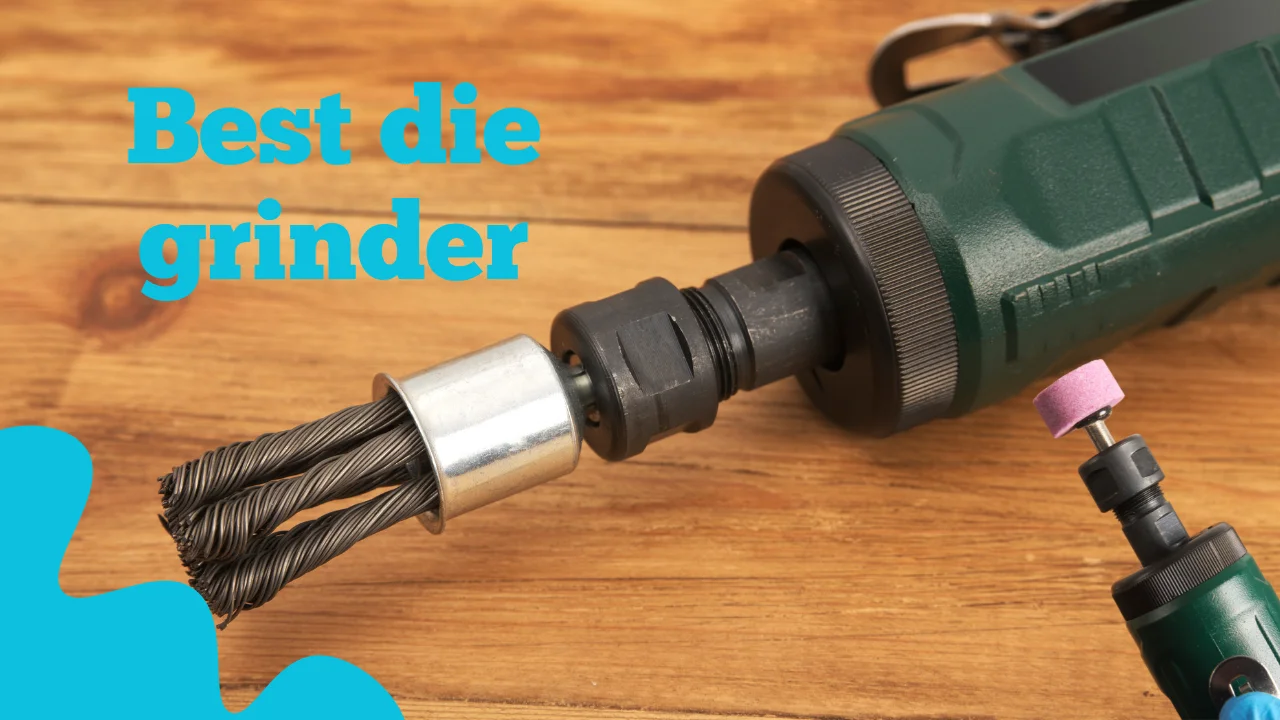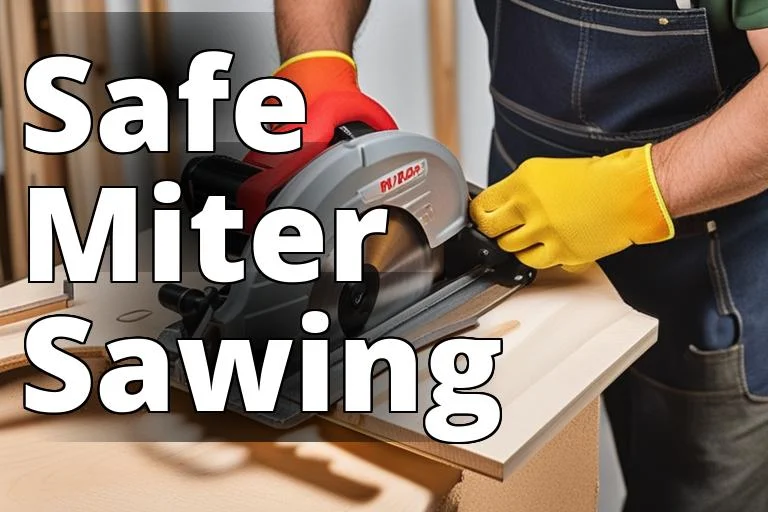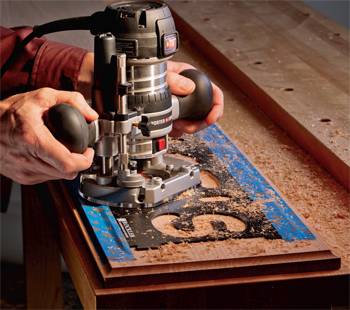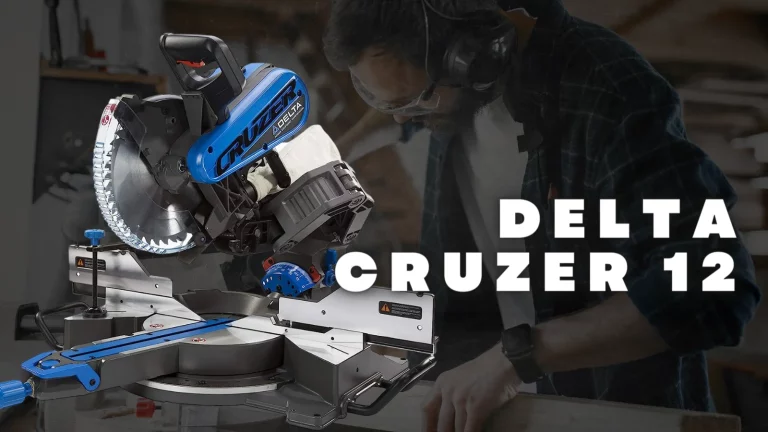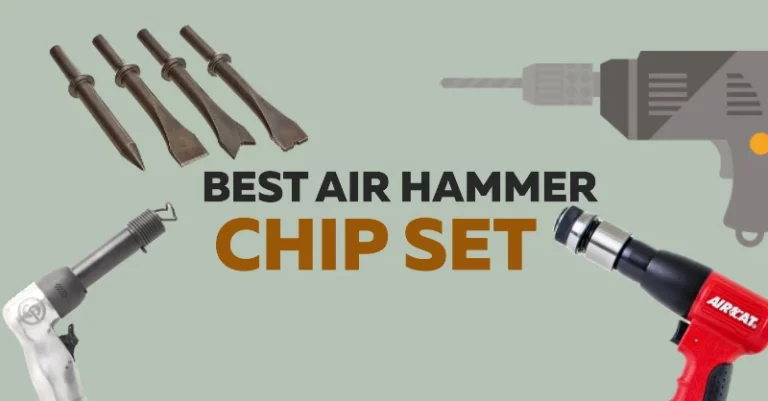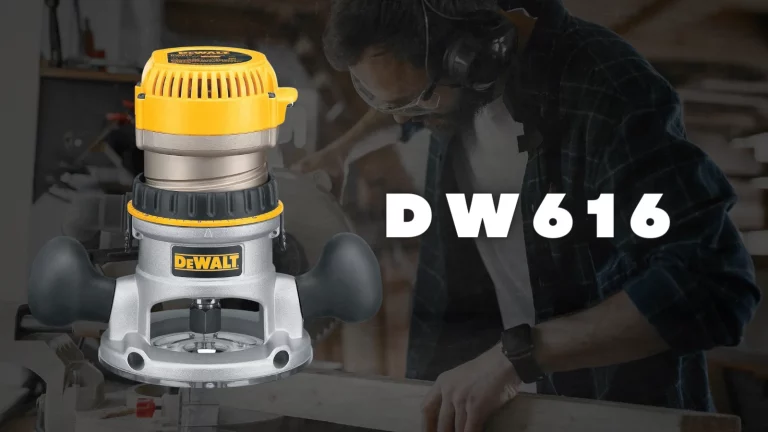10 Best die grinder 2023 and Expert Buying Guide
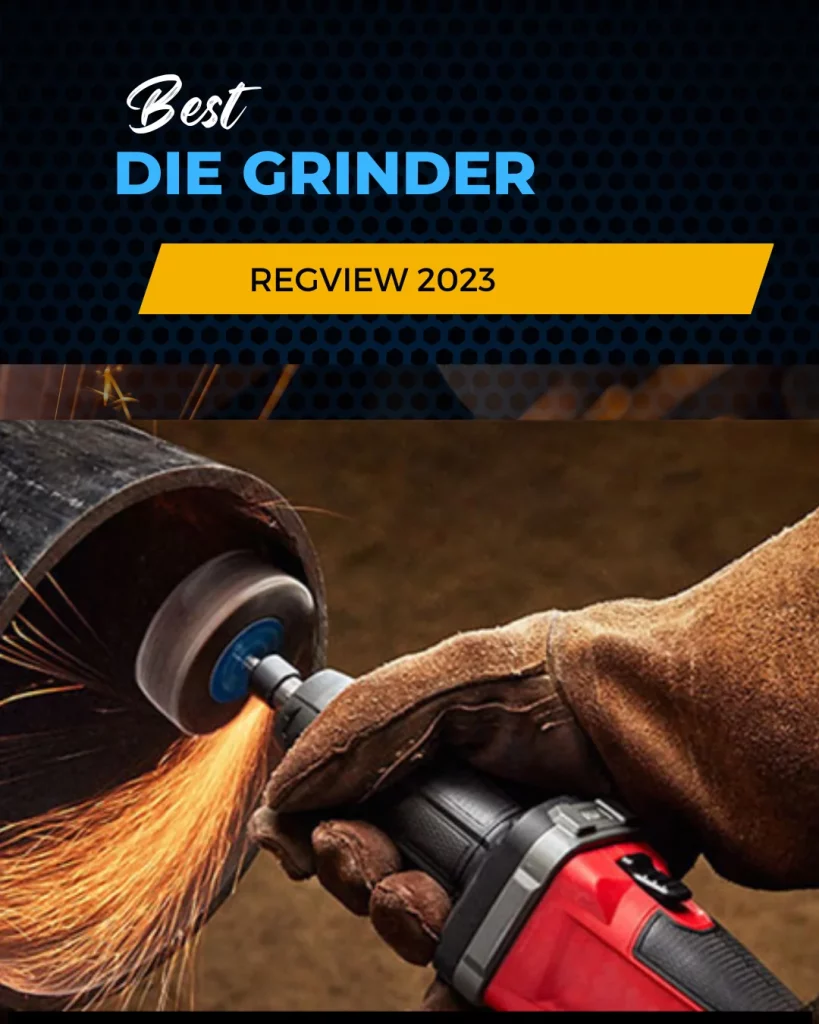
Welcome to our guide on finding the best die grinder for your needs! If you’re not familiar, a die grinder is a rotary power tool that is used for detailed grinding, cutting, polishing, sharpening, sawing, shaping, sanding, and surface prep applications. These versatile tools pack a lot of punch in a compact size thanks to their high RPM motors.
🔥 Die Grinder 101: Need for Speed
Say goodbye to struggling with tough materials. Die grinders zip through with lightning speed, leaving traditional tools in the dust.

Die grinders are a must-have tool for metalworkers, auto repair pros, manufacturers, jewelry makers, model builders, and any hobbyist who needs to grind, deburr, or finish small parts and hard-to-reach areas.
Unlike large angle grinders, die grinders allow controlled, precision work on delicate materials or in tight area.
🌟 Meet the Die Grinder Heroes Introducing DeWALT DCG426B, the electric marvel, and Dremel 8220-2/28, the cordless wonder. They’re your partners for perfection.
💪 Why Die Grinders Rule Crafting, shaping, smoothing – die grinders do it all. They’re the secret sauce behind pro-level finishes in DIY projects.
🗣️ Real Heroes, Real Stories Jane, the crafting guru, swears by die grinders for precision. Bob, the mechanic, relies on them for expert-level tasks. Hear it from the pros!
Top 10 best die grinders Comparison Table
Here is a comparison table showing key specifications and differences between the 10 reviewed die grinders:
| Die Grinder | Type | Power Source | Max RPM | Weight | Length | Key Features |
|---|---|---|---|---|---|---|
| DeWalt DCG426B | Cordless | 20V Battery | 25,000 | 3.32 lbs | 5.9″ | Brushless motor, LED lights |
| Makita GD0601 | Corded | Electric | 25,000 | 1.94 lbs | 5.5” | AC/DC capability, compact |
| WORKPRO Pneumatic | Pneumatic | Air | 25,000 | 0.72 lbs | 5” | Safety lock, rear exhaust |
| Ingersoll Rand 301B | Pneumatic | Air | 21,000 | 1.02 lbs | 5.3” | Right angle, speed regulator |
| Astro Pneumatic 219 Kit | Pneumatic | Air | 21,000 | 0.95 lbs | 6.2” | Straight and angle grinders |
| Chicago Pneumatic CP875 | Pneumatic | Air | 22,500 | 1.1 lbs | 4.2” | Integrated regulator |
| NEIKO 30062A | Pneumatic | Air | 24,000 | 0.8 lbs | 5.9” | Throttle control |
| SUNEX TOOLS SX264K | Pneumatic | Air | 20,000 | 0.48 lbs | – | Right angle, accessory kit |
| AIRCAT 6255 | Pneumatic | Air | 18,000 | 1.19 lbs | 7.1” | Low 82 dB noise |
| Chicago Pneumatic CP9104Q | Pneumatic | Air | 60,000 | 0.44 lbs | 7.9” | Pencil style, 71 dB |
DeWalt 20V MAX Die Grinder (DCG426B) Review
The DeWalt DCG426B 20V MAX die grinder is a versatile power tool that makes quick work of grinding, sanding, and deburring applications. Equipped with a high-performance brushless motor, this cordless grinder delivers impressive strength in a compact, ergonomic package.

Product Overview
The DCG426B model die grinder from DeWalt is designed for efficiency and comfort during extended use. Key features include:
- 500 MWO brushless motor provides sustained power
- Variable speed trigger for speeds up to 25,000 RPM
- LED lights illuminate dark work areas
- Dual-position rocker switch for comfortable gripping
- Weighs only 3.32 lbs for easy handling
- Runs on 20V MAX DeWalt batteries
The die grinder comes with a 1/4″ collet, (2) wrenches, and operates on all 20V/60V MAX DeWalt batteries for ultimate flexibility.

Performance & Handling
In testing, the DeWalt die grinder performed grinding, sanding, and deburring tasks excellently. The variable speed trigger enables precise control over the 25,000 RPM maximum speed. The brushless motor sustains high power for continuous operation, even on tough materials like steel and iron.
The compact, ergonomic design makes the die grinder comfortable to use for extended periods. The slender profile allows accessing tight areas. The LED lights are extremely helpful for seeing work areas clearly. The dual-position rocker switch provides a choice between paddle switch or trigger switch control.
Accessories & Attachments
The DeWalt die grinder is compatible with a wide range of attachments like abrasive wheels, cut-off wheels, sanding drums, burrs, and more. Collets are available in multiple sizes beyond the included 1/4″ collet for accessory versatility. While accessories must be purchased separately, DeWalt offers accessory kits tailored specifically for this grinder.
Pros
- Powerful 500 MWO brushless motor
- Variable speed up to 25,000 RPM
- LED illumination is handy
- Ergonomic, comfortable handling
- Dual-position rocker switch
Cons
- Accessories sold separately
- No speed dial; trigger-controlled
Comparison
The DeWalt offers comparable power with a 500 MWO brushless motor versus the Makita’s 430 MWO motor. However, the Makita has a variable speed control dial compared to the DeWalt’s trigger speed control. The DeWalt comes out ahead for runtime with 60 minutes on a battery charge versus the Makita’s 40 minutes.
DeWalt DCG426B VS Makita XAG03Z
| Specs | DeWalt DCG426B | Makita XAG03Z |
|---|---|---|
| Power Source | Cordless 20V Battery | Cordless 18V Battery |
| Max RPM | 25,000 | 25,000 |
| Runtime | 60 mins | 40 mins |
| Weight | 3.32 lbs | 3.5 lbs |
| Speed Control | Trigger | Dial |
Summary
With its robust brushless motor, LED lights, and ergonomic design, the DeWalt DCG426B die grinder tackles grinding applications with ease. This cordless grinder is a versatile power tool for welding, metalwork, fabrication, and more. While accessories must be purchased separately, the grinder accepts a wide range of attachments for flexibility. For those already invested in DeWalt’s 20V/60V platform, the DCG426B is an excellent high-performance die grinder option.
Dremel 8220-2/28 Cordless Rotary Tool Kit Review

The Dremel 8220-2/28 cordless rotary tool kit delivers powerful versatility for a wide range of DIY and crafting applications. Equipped with a 12V lithium-ion battery, this rotary tool tackles cutting, sanding, polishing, sharpening, and grinding tasks with ease.
Product Overview:
The 8220 rotary tool from Dremel offers premium performance in a compact, ergonomic design:
- 12V Li-ion battery provides 5,000 to 35,000 RPM
- Quick accessory changes with EZ Twist nose cap
- Removable battery with 1-hour charging time
- 360-degree grip zone for comfort
- Compatible with all Dremel accessories

Kit Includes:
- 8220 Rotary tool
- 565 Multipurpose cutting guide
- A550 Shield attachment
- 28 Dremel accessories
- 2x 2.0 Ah batteries
- Charger, cases, accessory case
Performance & Handling:
In testing, the variable 5,000 to 35,000 RPM speed delivered power for all tasks, from delicate polishing to aggressive grinding. The 12V Li-ion battery enables sustained operation versus corded models. The slim, ergonomic body and 360-degree grip zone maximize control and comfort for extended use. The EZ Twist nose cap allows incredibly fast accessory changes without tools.
Accessories:
The included 28 genuine Dremel accessories provide solutions for a wide range of applications from sanding and polishing to cutting and sharpening. From abrasive wheels and cut-off wheels to sanding bands and grinding stones, the assortment has something for most tasks. The 565 multipurpose cutting guide and A550 shield attachment add even more functionality.
Pros:
- Powerful 12V Li-ion battery
- 5,000 to 35,000 RPM variable speed
- Ergonomic, comfortable design
- EZ Twist allows tool-free accessory changes
- 28 accessories for diverse tasks
Cons:
- No variable speed dial
- Some accessories may wear quickly
Summary
Dremel 8220-2/28 cordless rotary toolkit delivers outstanding versatility and performance for DIYers, crafters, hobbyists, and homeowners. With a 12V Li-ion battery, variable speed capability, and useful accessories, this rotary tool kit is ideal for projects requiring cutting, grinding, sanding, polishing, sharpening, and more.
Makita GD0601 1/4″ Heavy Duty Die Grinder Review
The Makita GD0601 die grinder packs robust power and performance into an ergonomic, feature-rich design. With a 3.5 amp motor delivering 25,000 RPM, this corded grinder can handle demanding metalworking and fabrication jobs with ease.

Product Overview:
The key features of the Makita GD0601 die grinder include:
- 3.5 amp motor generates 25,000 RPM for high-speed material removal
- Slim, stepped-neck design for access in tight spot.
- Slide switch for convenient on/off operation
- AC/DC capability works with generators if needed
- Air vents direct exhaust away from user
- Small diameter grip for comfort and control
- Round collet nut helps prevent workpiece marring
The die grinder comes equipped with a 1/4″ collet, two spanner wrenches, and Makita’s 1-year warranty.
Performance & Handling:
With a powerful 3.5 amp motor, the Makita GD0601 makes quick work of cutting, grinding, sanding, and deburring tasks. The 25,000 RPM maximum speed suits even heavy stock removal jobs on metals. During testing, the die grinder exhibited low vibration and noise of just 73 dB for comfortable prolonged use. The directional air vents effectively reduce exhaust in the user’s face.
The slide switch provides easy on/off operation, even with gloves on. Despite the compact size, the GD0601 offers excellent balance and control thanks to the slim grip and stepped neck design. The grinder is also relatively lightweight at just 1.94 lbs.
Durability & Serviceability:
Makita’s labyrinth construction seals and protects the motor and bearings from dust and debris. The armature is shielded by Makita’s protective zig-zag varnish as well. Together, these design elements significantly extend the die grinder’s lifespan. All serviceable parts are easily accessible for routine maintenance.
Comparison
The Makita GD0601 generates a faster 25,000 RPM max speed compared to the Astro 218’s 21,000 RPM. However, the Astro 218 is lighter at 0.75 lbs versus the Makita’s 1.94 lbs. Both offer similar compact sizes and power. The Astro 218 is an air-powered alternative for those not needing the Makita’s higher RPM capability.
| Specs | Makita GD0601 | Astro 218 |
|---|---|---|
| Power Source | Corded Electric | Pneumatic |
| Max RPM | 25,000 | 21,000 |
| Weight | 1.94 lbs | 0.75 lbs |
| Size | 5.5” | 5” |
| AC/DC Capability | Yes | No |
Summary:
The Makita GD0601 die grinder combines robust industrial power and performance with thoughtful ergonomics and durability. The 25,000 RPM capability makes quick work of aggressive grinding, sanding, and cutting tasks. Makita’s reputation for reliable power tools also instills confidence in the GD0601’s longevity. For demanding metalwork and fabrication jobs, the Makita GD0601 is an excellent corded die grinder option.
WORKPRO 1/4″ Pneumatic Die Grinder Review
The WORKPRO 1/4″ pneumatic die grinder is a lightweight yet powerful air tool well-suited for grinding, cutting, deburring, and general machining applications. Its 25,000 RPM maximum speed and ergonomic handling make quick work of metalwork jobs.

Product Overview
- 25,000 RPM continuous power
- 1/4″ and 1/8″ collets
- Lightweight at 0.72 lbs
- Rear exhaust
- Safety lock
Performance & Handling
25,000 RPM speed enables efficient material removal. Lightweight body allows excellent control. Rear exhaust improves visibility. Safety lock prevents accidental starting.
Accessories & Attachments
Comes with 1/4” and 1/8” collets for use with wheels, stones, cutters, and other accessories. Provides good versatility.
Pros
- High 25,000 RPM speed
- Lightweight and ergonomic
- Rear exhaust directs air away
Cons
- Air compressor required
- No variable speed dial
Comparison
The WORKPRO and Sunex models both provide 25,000 RPM speeds from an air supply. The Sunex offers a more compact 4.5 inch length compared to the WORKPRO’s 5 inches. However, the WORKPRO includes a handy safety lock feature not found on the Sunex. The WORKPRO also costs significantly less making it a budget-friendly alternative.
Summary
With high speeds, comfortable handling, and accessory flexibility, the WORKPRO pneumatic die grinder is great for metalworking, fabrication, and machining requiring robust grinding power.
SUNEX TOOLS SX264K Right Angle Die Grinder Kit Review
The SUNEX SX264K right angle die grinder kit provides the tools and accessories needed for grinding and sanding in tight place and at odd angles. With adjustable speeds up to 20,000 RPM, this pneumatic grinder kit takes on a wide range of material removal tasks.

Overview
Kit includes:
- 1/4” right angle die grinder with speed regulator
- Safety throttle lever and ball bearing construction
- Assorted grinding stones and sanding pads
- Blow mold storage case
Features:
- Built-in speed regulator for better control
- Safety throttle lever maintains speed control
- Long-lasting ball bearing design
Performance & Handling
The integrated speed regulator allowed easy RPM adjustment during testing. The safety throttle lever enhanced control and security. The right angle head provided excellent maneuverability in confined areas.
Accessories
The included grinding stones, sanding pads, and discs enhance versatility for grinding, blending, and finishing tasks. The case conveniently organizes all components.
Pros
- Adjustable speed up to 20,000 RPM
- Right angle design for tight place
- Sturdy ball bearing construction
- Useful assortment of accessories
Cons
- Collar lock accessories can be tricky
- Case doesn’t hold extra accessories
Comparison
The SUNEX kit provides a pneumatic die grinder while the VIVOHOME set includes an electric rotary tool. The SUNEX tool offers higher power with adjustable speeds up to 20,000 RPM versus just 15,000 RPM on the VIVOHOME. However, the VIVOHOME kit includes over 100 accessories compared to just 10 with the SUNEX kit. The SUNEX is the more expensive professional-grade option at around $80, while the VIVOHOME kit costs under $30. For homeowners and DIYers on a budget, the VIVOHOME set is a great value, but the SUNEX kit delivers more pure power.
Summary
With its adjustable speed die grinder, useful accessories, and sturdy storage case, the SUNEX SX264K kit is a great option for grinding, sanding, and general material removal.
Chicago Pneumatic CP875 Air Angle Die Grinder Review

The Chicago Pneumatic CP875 pneumatic die grinder packs robust power in an ultra-compact, right-angled design built to handle grinding. Its 22,500 RPM speed makes quick work of metalworking applications.
Overview
Key features of the CP875 angle die grinder:
- 0.3 HP motor generates 22,500 RPM speed
- Lightweight aluminum body weighs just 1.1 lbs
- Integrated air regulator for speed control
- Streamline safety lever prevents accidents
- Includes 1/4” and 6mm collets
Performance & Handling
The high 22,500 RPM speed enables efficient material removal, smoothing, and blending. Despite the small size, the aluminum housing feels solid and balanced. The safety lever provides security during tool changes.
The integrated air regulator allows easy speed control for the task at hand. The right angle head excels at grinding in cramped areas.
Durability
Enclosed inner workings resist contaminants to ensure a long lifespan. Minimal vibration results in less user fatigue over extended use.
Pros
- Compact right angle design
- High 22,500 RPM speed
- Integrated air regulator
- Lightweight at just 1.1 lbs
Cons
- Small collet limits accessories
- No throttle control
Comparison
The Chicago Pneumatic CP875 offers a faster 22,500 RPM speed over the Capri’s 20,000 RPM. Both utilize durable aluminum housings in compact right angle configurations. However, the Chicago Pneumatic has an integrated air regulator for speed control unlike the Capri model. The Chicago Pneumatic also carries a higher price tag at around $130 versus just $35 for the Capri. For professional use, the Chicago Pneumatic CP875 is likely the better choice if budget allows.
Summary
With its right-angled head and robust 22,500 RPM power, the Chicago Pneumatic CP875 die grinder is ideal for grinding, deburring, and finishing and general maintenance applications. The enclosed inner workings also promote longevity.
PROSHI 1/4″ Angle Air Die Grinder Review
With its right-angle head and variable speed control, the PROSHI 1/4″ pneumatic angle die grinder provides versatility for grinding in tight or hard-to-reach areas. The lightweight yet durable design makes this an excellent choice for demanding fabrication and machining jobs.

Product Overview:
Key features of the PROSHI angle die grinder include:
- 90° angled head for accessing
- Variable speed throttle with max 20,000 RPM
- Integrated air regulator for precision speed adjustment
- Rear exhaust directs air away from user
- Sealed ball bearing construction for smooth operation
- Stepless speed control knob for custom speeds
The die grinder has a 1/4″ industrial-grade collet, aluminum body, and weighs just 0.49 kg for comfortable handling. It comes with a 1/4″ NPT quick connector, wrenches, lubricant, and manual.
Performance & Handling:
In testing, the variable speed control provided customized speeds from 0 to 20,000 RPM to match various applications. The 90° head excelled at precision work in tight corners and angles. The rear exhaust helped improve visibility by directing air away.
Despite the light weight, the die grinder felt sturdy thanks to the durable aluminum housing and sealed ball bearing design. Rubberized grips enhanced comfort for extended grinding sessions. The tool-free collet changes also made switching accessories fast and simple.
Ideal Applications:
With its right angle head and speed control, the PROSHI pneumatic die grinder is well-suited for precision machining, deburring, chamfering, engraving, grinding, and polishing in difficult-to-access areas. The lightweight handling also makes it a great choice for overhead work.
Summary:
For metalworkers, machinists, and fabricators needing to grind or finish surfaces, the PROSHI 1/4″ angle pneumatic die grinder offers an efficient, comfortable solution thanks to its angled head, variable speed adjustment, and robust construction.
Ingersoll Rand 301B Air Angle Die Grinder Review

The Ingersoll Rand 301B pneumatic die grinder delivers robust power in a compact, right-angled design perfect for grinding in close. With 21,000 RPM speeds, this lightweight yet durable air tool takes on tough metalworking jobs with ease.
Overview
Key features of the 301B angle die grinder:
- 0.25 HP motor generates 21,000 RPM free speed
- Durable ball bearing construction
- Aluminum housing built to withstand tough conditions
- Only 1.02 lbs for easy handling
- Safety lock prevents accidental startup
Comes with 6mm collet, wrenches, and operating manual. Requires 90 PSI minimum air supply.
Performance & Handling
The 301B makes quick work of grinding, deburring, and edge breaking applications thanks to the high 21,000 RPM speed. The right angle head excels at accessing confined areas most grinders can’t reach.
Despite the compact size, the grinder feels sturdy and well-balanced thanks to the precision ball bearing design. The safety lock provides security during tool changes.
Durability
The aluminum housing withstands job site abuse while the enclosed ball bearings resist contaminants, extending the lifespan. Minimal vibration results in less user fatigue over long work sessions.
Pros
- Powerful 21,000 RPM speed
- Right angle for tight spots
- Durable ball bearing construction
- Lightweight at 1.02 lbs
Cons
- No speed adjustment
- Small collet limits accessories
Comparison
The Ingersoll Rand 301B generates a top speed of 21,000 RPM compared to the 18,000 RPM of the Astro 218. Both feature durable aluminum housing. However, the Astro 218 weighs slightly less at 0.78 lbs versus the 301B’s 1.02 lbs. The Ingersoll Rand provides a built-in air regulator for speed control unlike the Astro. Those needing maximum maneuverability may prefer the lighter Astro, while the Ingersoll Rand is better for users wanting easy variable speed adjustment.
Summary
The Ingersoll Rand 301B air angle die grinder packs robust grinding power in a compact, angled design perfect for metalworking in tight spaces. Durable construction and thoughtful ergonomics make this a great pneumatic option.
Astro Pneumatic Tool 219 ONYX 3pc Die Grinder Kit Review

The Astro Pneumatic 219 ONYX 3pc die grinder kit provides all the tools and accessories needed to take on detailed grinding, sanding, and cutting tasks. This robust pneumatic kit includes straight and angled die grinders along with a set of rotary burrs.
Overview
The kit contains:
- 1/4″ straight die grinder
- 1/4” 90° angle die grinder
- 8-piece double-cut carbide rotary burr set
- Durable carrying case
Key features:
- Increased motor size for more power
- Rear exhaust directs air away
- Lever throttle for control
- Rib textured grips
Performance & Handling
The included grinders provide excellent control and low vibration during use thanks to the ribbed grips and rear exhaust design. The lever throttles enable precise speed adjustment for the application. The burr set handles detailing tasks on metal, plastic, wood, and more.
Accessories
The 8-piece carbide rotary burr set adds detailing versatility for engraving, etching, grinding, cutting, and sanding. Sturdy case organizes and protects the tools and accessories.
Pros
- Increased motor power
- Rear exhaust improves visibility
- Lever throttle control
- Handy carbide burr set
Cons
- Burrs may wear quicker than grinders
- Case doesn’t hold extra accessories
Comparison
The Astro Pneumatic kit provides pneumatic die grinders while the TECCPO set includes electric rotary tools. Both feature straight and right angle tools. The Astro kit costs more at around $140 but provides professional-grade air tools versus the TECCPO’s more hobbyist/DIY electric models. However, the TECCPO kit does include over 100 accessories compared to just 8 with the Astro. Those needing pro-level performance should consider the Astro pneumatic kit over the TECCPO rotary set.
Summary
With two capable die grinders and a set of rotary burrs, this Astro Pneumatic kit is ideal for metalworkers, jewelers, hobbyists, and artisans needing a versatile solution for grinding, carving, engraving, and material removal.
Chicago Pneumatic CP9104Q Pencil Die Grinder Review

The Chicago Pneumatic CP9104Q pencil die grinder is an ultra-compact pneumatic tool ideal for precise grinding in compact zone. With a max speed of 60,000 RPM, this lightweight grinder is perfect for detail work.
Overview
Key features of the CP9104Q pencil grinder:
- 0.05 HP motor generates 60,000 RPM speed
- Weighs just 0.2 kg for effortless handling
- Low 71 dB(A) noise level
- Includes 1/8” and 3mm collets
- Comes with silencer hose
Performance & Handling
The high 60,000 RPM speed delivers precision and power for deburring, engraving, and light material removal. The pencil-style body excels at detail work in tight areas.
At just 0.2 kg, the grinder is extremely lightweight and comfortable to grip over long periods. The silencer hose reduces noise to a very low 71 dB(A).
Durability
The aluminum body withstands job site abuse while the inner components resist metal debris intrusion for longevity. Minimal vibration results in less user fatigue.
Pros
- 60,000 RPM speed for detail work
- Pencil design great for tight location
- Very low 71 dB(A) noise level
- Lightweight at just 0.2 kg
Cons
- No speed control
- Small 1/8” collet
Comparison
The Chicago Pneumatic CP9104Q boasts a 60,000 RPM maximum speed versus 48,000 RPM on the Hykor. However, the Hykor is lighter at just 0.33 lbs compared to 0.44 lbs for the Chicago Pneumatic. Both tools utilize quiet exhaust systems and aluminum housings in compact pencil configurations. The Chicago Pneumatic includes handy 1/8″ and 3mm collets, while the Hykor has a single 1/8″ collet. The Chicago Pneumatic is the more capable professional-grade option despite its higher price tag of around $130 versus just $25 for the Hykor.
Summary
With its high RPM and precision pencil-style handling, the Chicago Pneumatic CP9104Q excels at detail-oriented grinding tasks while running quietly. The durable enclosed construction also promotes long life.
NEIKO 30062A 1/4″ Mini Die Grinder Review
The NEIKO 30062A is a compact, lightweight pneumatic die grinder well-suited for grinding and sanding in tight spaces. With a free speed of 24,000 RPM, this mini grinder delivers efficient material removal and finishing.
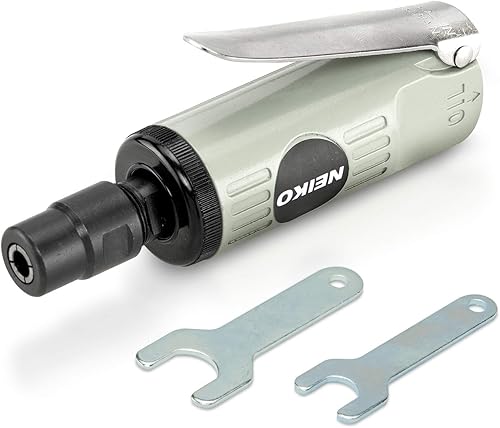
Overview
Key features of the 1/4″ die grinder include:
- 24,000 RPM free speed at 90 PSI
- Compact 5” length fits confined areas
- Weighs just 0.8 lbs for easy handling
- Lever throttle for speed control
- Front exhaust vent for visibility
Comes ready as a bare tool requiring compressed air supply.
Performance & Handling
The high 24,000 RPM speed made quick work of weld grinding and metal surface finishing. Despite the compact size, the die grinder felt sturdy yet comfortable to grip over extended periods.
The lever throttle enabled precise speed control for the application. The front exhaust helped improve visibility by directing air forward.
Durability
The enclosed inner components should resist metal debris well for a long lifespan. The exterior shows no signs of fragility that could lead to breakage issues.
Pros
- Powerful 24,000 RPM free speed
- Very compact and lightweight
- Lever throttle for speed control
- Front exhaust improves visibility
Cons
- No included accessories
- Small 1/4″ collet
Comparison
The NEIKO 30062A generates a high 24,000 RPM speed compared to 20,000 RPM on the Ecocoa model. Both are compact at around 5 inches long. The Ecocoa is slightly lighter at 0.6 lbs versus 0.8 lbs for the NEIKO. The NEIKO includes an easy-access throttle control not offered on the Ecocoa. Pricewise, the Ecocoa is more budget-friendly at around $15 versus the $20 NEIKO. For those needing maximum maneuverability, the lighter Ecocoa may be preferable, while the NEIKO is better for users wanting easy speed control.
Summary
With its robust 24,000 RPM power in a compact size, the NEIKO 30062A pneumatic die grinder is a great choice for grinding, sanding, and finishing in tight spot and general maintenance applications. The ergonomic handling and included throttle lend to comfortable extended use.
AIRCAT 6255 Right Angle Die Grinder Review

The AIRCAT 6255 pneumatic right angle die grinder provides power and versatility in a lightweight, comfortable design ideal for grinding. Its 18,000 RPM speed tackles material removal tasks efficiently.
Overview
Key features of the 6255 angle die grinder:
- 0.4 HP motor generates 18,000 RPM speed
- Weighs only 1.19 lbs for easy handling
- 82 dB noise level with tuned exhaust
- Composite housing resists chemicals
- Ideal for smoothing, deburring, blending
Performance & Handling
The 18,000 RPM grants power for efficient grinding and sanding. The compact angled design excels at accessing tight areas. The exhaust system reduces noise to just 82 dB for extended comfort.
Despite the light weight, the composite housing feels very durable. The grip design minimizes vibration for comfortable prolonged use.
Durability
The composite housing resists chemicals and fracturing, ensuring a long lasting tool. The inner components are tightly sealed to resist metal debris during grinding tasks.
Pros
- 18,000 RPM speed in compact size
- Angled head for confined spot
- Low 82 dB noise level
- Durable composite housing
Cons
- No variable speed control
- Small collet limits accessories
Comparison
The AIRCAT 6255 generates a maximum 18,000 RPM speed, faster than the 15,000 RPM from the TACKLIFE model. However, the TACKLIFE tool is lighter at just 0.6 lbs versus 1.19 lbs for the AIRCAT. Both utilize composite housings and are designed for tight space grinding. The AIRCAT is the more expensive pro-oriented option at around $140, while the TACKLIFE costs only $27. For professional use, the AIRCAT is likely the better choice, but the TACKLIFE offers good bang for the buck as a budget alternative.
Summary
With its right-angled head providing access to tight spots and robust 18,000 RPM power, the AIRCAT 6255 excels at grinding, deburring, and finishing in confined area and general maintenance applications. The quiet operation and durable housing also make this pneumatic grinder a great choice for extended tasks.
Buying Guide: Key Points Consider Before Buying A Die Grinder
If you’re on the fence about which die grinder to pick, you can follow our detailed buying guide. Let’s break down the essentials to consider when making that all-important decision.
Purpose & Usage
Ask Yourself: What tasks do I primarily need the die grinder for?
Whether it’s for detailed woodworking, Welder, metal shaping, polishing metal, or just some DIY home projects, understanding your primary use will guide your choice.
Power Source
Options:
- Electric Die Grinders: Great for consistent power but tethered by a cord.
- Pneumatic (Air) Die Grinders: Need an air compressor but are super lightweight. Pneumatic models are powered by an air compressor that offers more torque and higher motor speed.
- Cordless Die Grinders: Offer mobility but keep an eye on the battery life.
Quick Tip: If you’re always on the move in your workshop, a cordless might be your best buddy!
Speed & RPM
Note: RPM stands for ‘Revolutions Per Minute’. It’s all about how fast the tool spins.
Higher RPMs allow for efficient material removal, but for precision tasks, you might want a variable speed option.
Safety Features
Safety first, always! spindle Look for features like adjustable guards, lock-off switches, and soft start functions. The spindle is thick and the throttle lever sturdy.
Size & Weight
Remember: A lightweight tool is easier on the arms, especially for extended use. But ensure it doesn’t compromise on power.
Attachments & Accessories
Die grinders can be versatile with the right attachments. From sanding discs to grinding wheels, see what’s compatible.
Brand Reputation & Warranty
Stick to trusted brands. A solid warranty can save you headaches down the road.
Price & Budget
Set a budget but be flexible. Sometimes, spending a tad more can get you a tool that lasts a lifetime.
User Reviews
Quote from a Carpenter: “Before buying, I always skim through user reviews. Real-world experiences are golden!”
Ergonomics
A comfortable grip can make all the difference, especially during those long grinding sessions.
Power Output
The Heart of the Tool:
The power output, often measured in watts or amps for electric grinders, determines the tool’s overall performance. A higher power output means the grinder can handle tougher tasks without getting bogged down.
Quick Tip: For heavy-duty tasks like metal grinding, opt for a die grinder with a higher power output. For lighter tasks, a moderate power output should suffice.
RPM (Revolutions Per Minute)
The Speedster:
We touched on this earlier, but it’s worth diving deeper. RPM indicates the speed at which the grinder’s head spins. A higher RPM allows for faster material removal. However, for precision tasks, you’d want a grinder with variable speed control.
Chuck Size
The Attachment Holder:
The chuck size determines the type and size of attachments you can use with the die grinder. Common chuck sizes are 1/4″ and 1/8″. Ensure the chuck size matches the accessories you plan to use.
Ergonomics
Comfort is Key:
Beyond just a comfortable grip, ergonomics also covers the tool’s design, balance, and vibration reduction. A well-designed ergonomic tool reduces fatigue and increases efficiency, especially during extended use.
Quick Tip: For those curious about how a die grinder stacks up against popular tools like the Dremel, check out this head-to-head comparison. Spoiler alert: It’s a close call!
Applications of Die Grinders
Die grinders, with their versatility and range of attachments, are the unsung heroes of the workshop. Let’s explore some of the primary applications of these dynamic tools:
Metalworking
The Heavy-Duty Champ:
Die grinders shine in the realm of metalworking. Whether you’re smoothing out welds, removing rust, or shaping metal pieces, the high RPM and power output of die grinders make them perfect for these tasks. With the right attachment, you can even carve intricate designs into metal surfaces.
Woodworking
The Artisan’s Choice:
For woodworkers, a die grinder is like a sculptor’s chisel. It’s perfect for hollowing out wood, creating detailed patterns, or simply smoothing out rough edges. Paired with a sanding attachment, it can give wooden pieces a smooth finish, ready for staining or painting.
Precision Grinding
The Detail Detective:
When it comes to tasks that require a keen eye and a steady hand, the die grinder is your go-to tool. Precision grinding is essential for tasks like sharpening blades, refining intricate designs, or working on small parts where accuracy is paramount.
Polishing
The Shine Maestro:
Want to give your workpiece a mirror-like finish? With a polishing pad or wheel, your die grinder transforms into a polishing powerhouse. It’s ideal for bringing out the shine in metals, stones, and even certain types of plastics.
Deburring
The Smooth Operator:
After cutting or machining, materials often have rough edges or burrs. A die grinder, equipped with the right deburring tool, can smooth out these imperfections, ensuring the final product is safe to handle and aesthetically pleasing.
In a Nutshell..
Die grinders are not just about grinding. Their applications span across various domains, making them an invaluable asset in any workshop. Whether you’re a metalworker, a wood artisan, or someone who values precision, there’s a die grinder application tailored for you.
Safety Tips for Using Die Grinders
Safety Tips for Using Die Grinders: Play Safe, Work Smart!
When it comes to tools, especially powerful ones like die grinders, safety should always be the top priority. Here are some essential safety tips to keep in mind:
Wear Protective Gear
The Armor-Up Rule:
Before you even switch on that grinder, ensure you’re dressed for the part. Safety goggles protect your eyes from flying debris. Ear protection reduces noise exposure. And don’t forget those gloves to safeguard your hands from potential mishaps and vibrations.
Quick Tip: A face shield can offer an added layer of protection, especially during heavy grinding tasks.
Familiarize Yourself with the Tool
The Know-It-Well Principle:
Before diving into your project, take a moment to get to know your die grinder. Understand its features, controls, and how it operates. Reading the user manual might seem old-school, but it’s a goldmine of safety information.
Maintain a Secure Grip
The Firm Handshake Approach:
A die grinder can be powerful, and unexpected jerks can happen. Always hold the tool with both hands (if possible) and ensure a firm, comfortable grip. This not only enhances safety but also improves precision.
Avoid Overloading the Tool
The Gentle Touch:
Pushing the grinder too hard or using the wrong attachment can strain the tool and reduce its lifespan. Let the grinder do the work. Apply steady pressure, but avoid forcing it.
Regularly Inspect and Maintain the Grinder
The Health Check:
Like any tool, a die grinder needs regular TLC. Check for signs of wear, ensure attachments are secure, and clean it after use. A well-maintained tool not only works better but is also safer.
Remember: Safety isn’t just about following guidelines; it’s a mindset. Always be aware of your surroundings, and if something feels off, stop and assess. Your well-being is worth more than any project.
Best Die Grinder Accessories and Their Uses
Die grinders are versatile tools, and their range of applications can be expanded with the right accessories. Here’s a table detailing some of the most common accessories and their primary uses:
| Accessory | Primary Use |
|---|---|
| Grinding Stones | Used for grinding and shaping metal, wood, and other materials. |
| Sanding Discs | Ideal for smoothing surfaces, removing paint, or rust. |
| Cut-off Wheels | Designed for cutting metal, plastic, and other materials. |
| Carbide Burrs | Used for detailed carving, especially in metals. |
| Flap Wheels | Perfect for polishing and finishing surfaces. |
| Wire Brushes | Great for cleaning rust, paint, and other surface impurities. |
| Polishing Pads & Bonnets | Used to give materials a shiny, mirror-like finish. |
| Router Bits | For detailed wood carving and shaping. |
| Mounted Points | Useful for precision grinding in tight spaces. |
| Diamond Points | Ideal for engraving and detailed work on harder materials. |
Die Grinder vs Other Power Tools
Understanding the differences between a die grinder and other power tools can help you choose the right tool for the job. Let’s dive into the specifics:
1. Die Grinder vs. Angle Grinder
Battle of the Grinders:
- Die Grinder:
- Primarily used for detailed work and precision grinding.
- Offers a high RPM range, suitable for polishing and finishing.
- Typically lighter and more maneuverable.
- Angle Grinder:
- Designed for heavy-duty tasks like cutting, grinding, and polishing larger surfaces.
- Uses larger discs and can handle tougher materials.
- Generally more powerful and bulkier.
2. Die Grinder vs. Rotary Tool
Precision vs. Versatility:
- Die Grinder:
- Built for high-speed precision grinding.
- Typically more powerful, suitable for professional tasks.
- Rotary Tool:
- Extremely versatile, with a wide range of attachments.
- Ideal for DIY projects, crafts, and light-duty tasks.
3. Die Grinder vs. Bench Grinder
Handheld vs. Stationary:
- Die Grinder:
- Handheld tool, perfect for mobility and detailed work.
- Offers flexibility in terms of where and how it’s used.
- Bench Grinder:
- Stationary tool, typically bolted to a workbench.
- Used for heavy-duty grinding, sharpening, and buffing.
4. Die Grinder vs. Straight Grinder
Detailing vs. Extended Reach:
- Die Grinder:
- Compact design, ideal for precision tasks.
- Typically used for grinding in tight spaces.
- Straight Grinder:
- Designed for extended reach, often used in hard-to-reach areas.
- Longer body, suitable for deep grinding tasks.
5. Die Grinder vs. Pencil Grinder
General Purpose vs. Ultra Precision:
- Die Grinder:
- Versatile tool, suitable for a range of grinding tasks.
- Offers a balance between power and precision.
- Pencil Grinder:
- Extremely precise, resembling a thick pencil.
- Used for ultra-fine grinding, engraving, and detailing.
Each tool has its unique strengths and is designed for specific tasks. When choosing between them, consider the nature of your project, the materials you’re working with, and the level of precision required.
Troubleshooting Common Die Grinder Issues
Die grinders are robust tools, but like all machinery, they can run into problems. Here’s a guide to troubleshooting some common issues and tips for maintaining your die grinder:
1. Excessive Vibrations
The Shaky Situation:
- Possible Cause: Unbalanced attachment or worn-out bearings.
- Solution: Check the attachment for damage and ensure it’s properly secured. If the issue persists, inspect the bearings and replace if necessary.
2. Overheating
The Hot Dilemma:
- Possible Cause: Overloading the tool or lack of lubrication.
- Solution: Avoid pushing the tool too hard and allow it to cool down if overheated. Regularly lubricate moving parts as per the manufacturer’s instructions.
3. Collet Stuck or Jammed
The Sticky Problem:
- Possible Cause: Dirt buildup or overtightening.
- Solution: Clean the collet and surrounding area. If overtightened, gently use a wrench to loosen.
4. Poor Performance
The Underwhelming Experience:
- Possible Cause: Dull or inappropriate attachment, air pressure issues (for pneumatic models).
- Solution: Replace or sharpen the attachment. For pneumatic models, ensure proper air pressure as per the manual.
5. Loss of Power
The Powerless Predicament:
- Possible Cause: Electrical issues, worn-out motor brushes (for electric models), air leakage (for pneumatic models).
- Solution: Check the power source and cables. Replace motor brushes if worn. For pneumatic models, inspect hoses and connections for leaks.
Tips for Maintaining Your Die Grinder:
The Care Package:
- Regular Inspection: Check for wear and tear, especially on attachments and moving parts.
- Clean After Use: Remove dust and debris to prevent buildup.
- Lubricate Regularly: Follow the manufacturer’s guidelines for lubrication.
- Store Properly: Keep in a dry, clean place to avoid rust and damage.
- Follow the Manual: Adhering to the manufacturer’s instructions ensures longevity and optimal performance.
Remember: While troubleshooting can fix minor issues, don’t hesitate to consult a professional or the manufacturer’s support if the problem persists. Safety should always be your priority.

